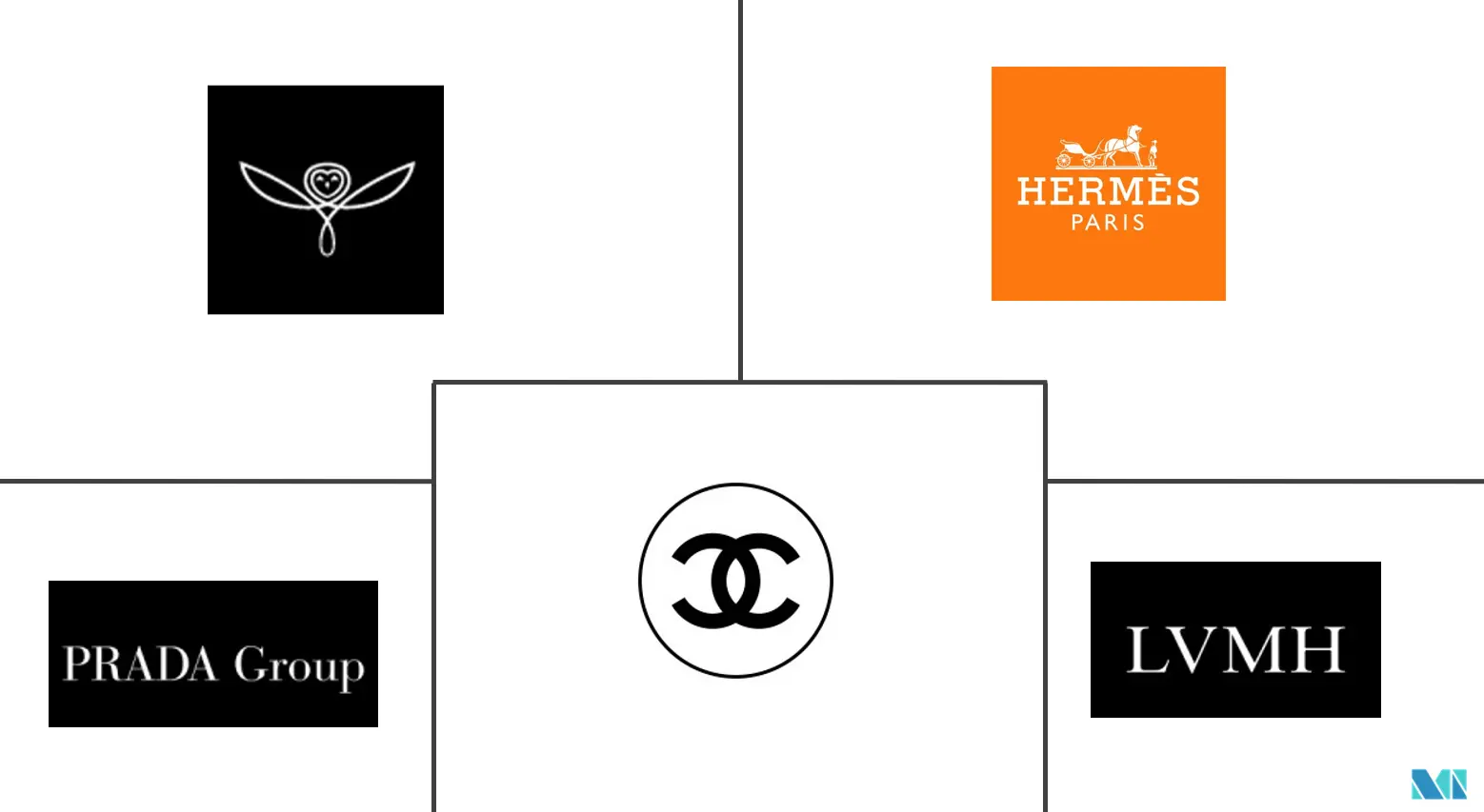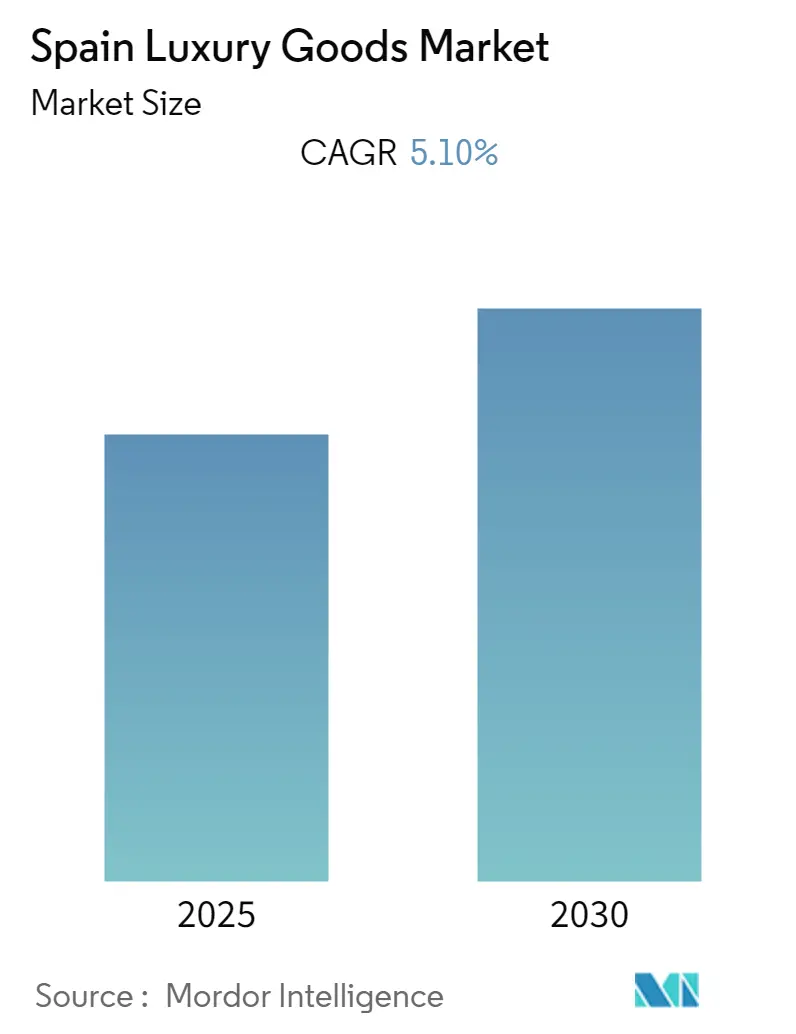
Spain Luxury Brands Market Analysis
The Spain Luxury Goods Market is expected to register a CAGR of 5.1% during the forecast period.
The Spain luxury goods industry has been heavily impacted by the Covid-19 crisis. Tourist arrivals have decreased as a result of the lockdown and restrictions enforced, compelling them to stay at home. Online purchasing for luxury items, on the other hand, has flourished and therefore the pandemic has highlighted the need for digitization as a key strategy for luxury brands in the forecasted years. Further, the market performance during the second quarter of 2020 demonstrates that luxury brands are ready to adopt more online channel marketing which in turn is anticipated to increase online sales of luxury goods in the future. For instance, in June 2022, Amazon launched its luxury fashion platforms in key European countries including Spain. In Spain, luxury stores have been launched to showcase ready-to-wear collections from established and emerging brands including Christopher Kane, Dundas, Elie Saab, Mira Mikati, Rianna + Nina, Boglioli, Jonathan Cohen, and Altuzarra. The luxury brands are anticipated to distribute through their own or Amazon's warehouse and will offer free returns and delivery services.
Over the medium term, millennials are considered to be the target consumers for luxury goods, as the generation is more open to spending on life's luxuries supported by financial independence and significant disposable income. Further, the increased exposure to the global and regional fashion trends due to the rising use of social media platforms is the key factor shaping consumer buying behavior. In response to this trend, luxury brands are collaborating with social media influencers to create purposeful promotional campaigns, which in turn encourage affluent consumers to purchase luxury fashion products.
Additionally, modern consumers are concerned about an ever-worsening climate crisis and desire to make a difference by adopting sustainable fashion trends. Therefore, luxury businesses' sustainability practices have a significant impact on the purchasing decisions of millennial consumers, which in turn promotes R&D and innovation to develop a range of luxury goods with the use of eco-friendly materials and ethical manufacturing methods. For instance, Spanish brands specializing in sustainable luxury fashion goods include - AVASAN, Flamingos' Life, Castañer, TwoThirds, and Balenciaga, among others.
Spain Luxury Brands Market Trends
Rise in Fashion and Cultural Tourism
The expansion of Spain's fashion and tourist industries is one of the causes propelling the country's market for luxury goods. Spain is the home to fashion houses such as Loewe and conglomerates Puig as well as the creation of high-end luxury products which also contributes to the sales of luxury goods and services in the country. In Spain, international luxury brands are easily available in their self-operated brick-and-mortar stores, third-party multibrand retail stores, or direct-to-consumer online fashion stores. There is a sizable portion of tourists who insulate themselves in luxury goods purchasing. Tourists for leisure and sports primarily come from Asia, the Middle East, and Latin America to shop in Spain. Many international consumers visit Spain and acquire high-quality Spanish-made products. For instance, the statistics revealed by the Spanish government in March 2022, state that the average spending of tourists was around €1,257 per person, which denotes an annual growth of 13.6% from the amount of €1,068 that tourists spent on average in March 2019. Thereby, with the aid of tourism and improved brand positioning, the luxury goods market in Spain is anticipated to grow during the forecast period.
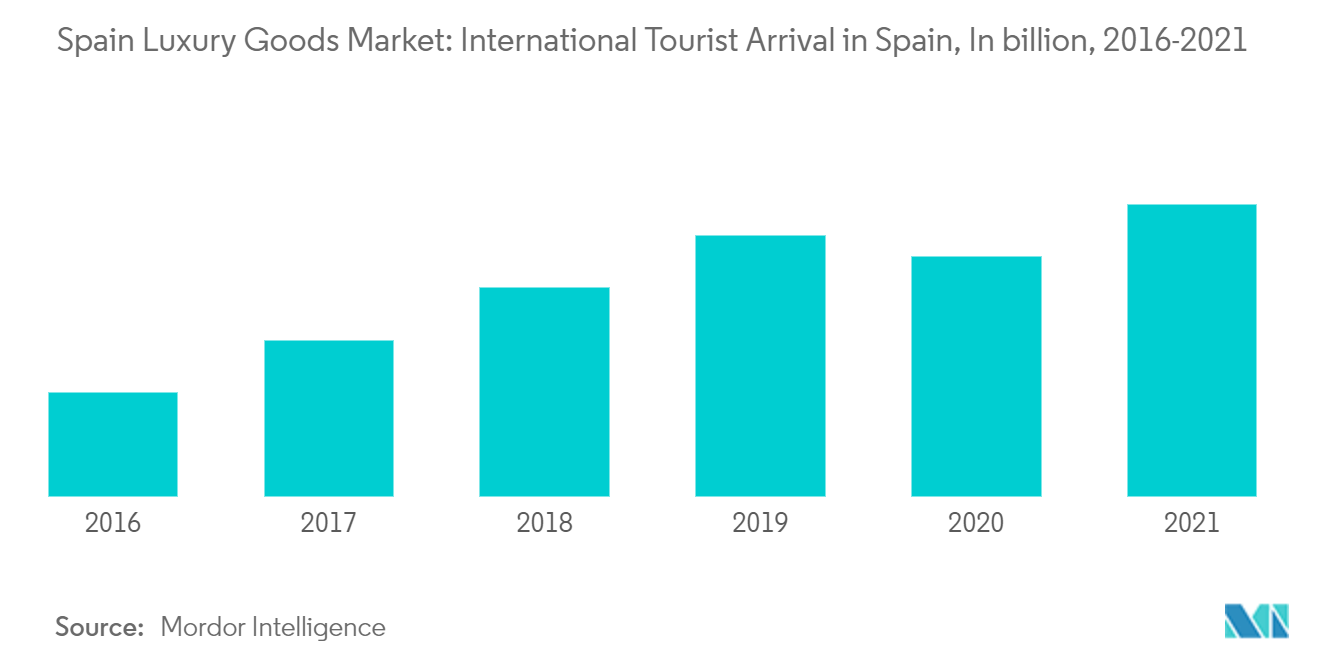
Expansion of E-commerce Fashion
Luxury goods brands are increasingly betting on offering a complete digital experience to users. The expansion of online shopping presents a great opportunity to draw in and keep a consumer base that is becoming more digitally savvy. According to the Instituto Nacional de Estadística, in 2021, nearly 5.5 million people aged 35 to 44 purchased products or services online in Spain. In contrast, younger and older internet users were those who registered the lowest number of e-commerce users. Moreover, as per PPro, a global provider of local payments infrastructure, e-commerce accounted for 4.7% of Spain's gross domestic product in January 2021. Companies are also expanding their brands through e-commerce channels to promote their luxury products in the country. For instance, In March 2022, Spanish jewelry brand, Tous launched its new app globally to offer a customized experience to its customers. The mobile application is available on Google Play and the App Store. Additionally, the Spanish sourcing, distribution, and logistics systems are quickly adapting to the country's expanding e-commerce market. In terms of online channels, luxury goods are also sold in Spain via in-house sites of independent premium brands along with third-party sites like amazon, elcorteingles, aliexpress, and more.
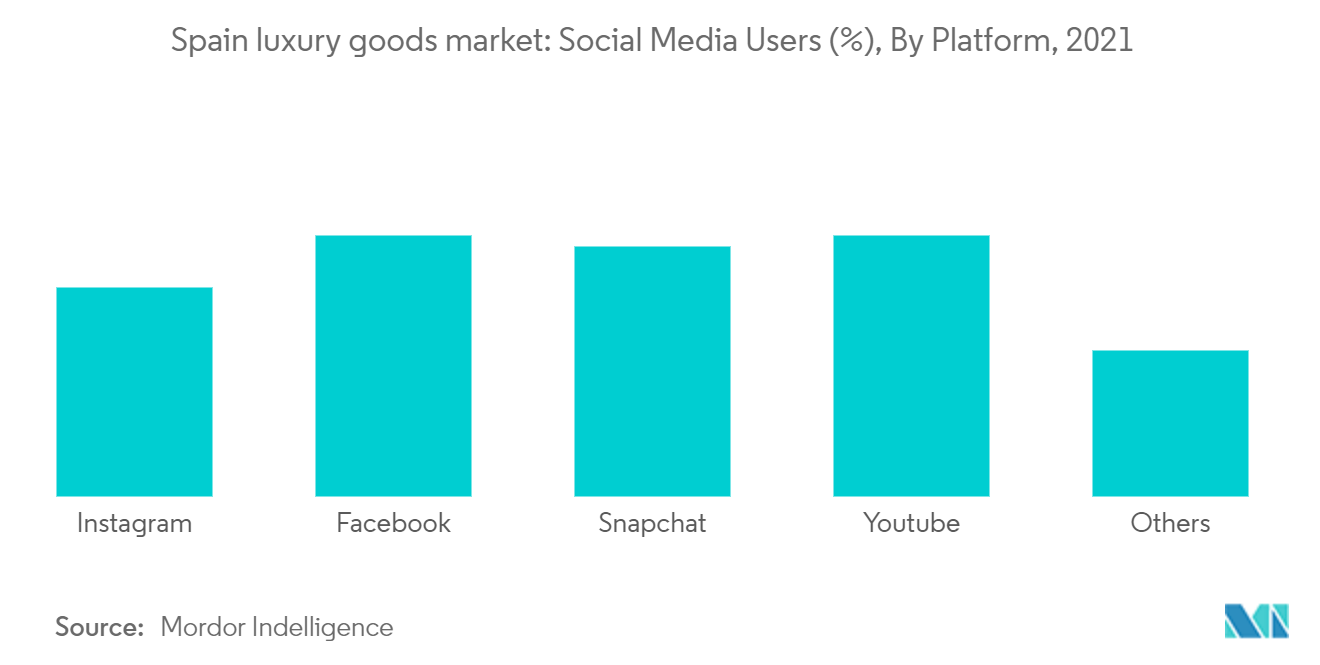
Spain Luxury Brands Industry Overview
The Spain luxury goods market is a fragmented market, with many international companies and conglomerates like LVMH Moët Hennessy Louis Vuitton, Kering Group, Prada Holding S.P.A., Hermès International S.A., and Chanel SA among others competing with several other regional brands for significant market share. Key companies are emphasizing on mergers, expansion, acquisitions, and partnerships along with new product development in order to boost their market presence and reach the target customers. For instance, In June 2020, Spanish perfume and fashion company Puig invested its majority stake in British makeup brand Charlotte Tilbury Beauty Ltd.
Spain Luxury Brands Market Leaders
-
Kering Group
-
Prada Holding S.P.A.
-
Hermès International S.A.
-
Chanel SA
-
LVMH Moët Hennessy Louis Vuitton
- *Disclaimer: Major Players sorted in no particular order
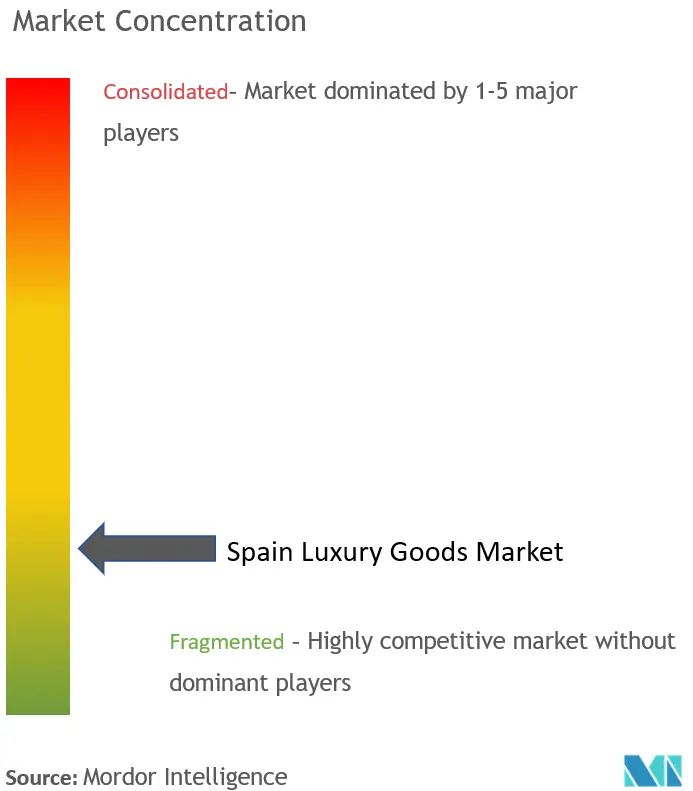
Spain Luxury Brands Market News
- In June 2022, Amazon launches its luxury fashion vertical in Spain. The e-commerce platform will include luxury fashion and beauty labels such as Christopher Kane, Dundas, Mira Mikati, Rianna+Nina and Altuzarra.
- In July 2021, Carner Barcelona, a luxury perfume brand launched its first collection of hair perfumes, featuring natural ingredients. The perfume collection is available in four different fragrances namely, Tardes, Bo-bo, Latin Lover, and Costarela.
- In February 2021, Spanish brand Hoss Intropia, which was acquired by fashion group Tendam in 2019, relaunched in the market with its spring/summer 2021 collection.
Spain Luxury Brands Industry Segmentation
Luxury goods refer to premium or elite quality products which are expensive as compared to conventional accessories. The Spain luxury goods market is segmented by type and distribution channel. By type, the market is categorized into clothing and apparel, footwear, bags, jewelry, watches, and other luxury goods. By distribution channel, the market is segmented into single-brand stores, multi-brand stores, online stores, and other distribution channels. The report offers market size and forecasts in terms of value (USD million ) for all the above segments.
| By Type | Clothing and Apparel |
| Footwear | |
| Jewellery | |
| Watches | |
| Bags | |
| Other Luxury Goods | |
| By Distribution Channel | Single-brand Store |
| Multi-brand Stores | |
| Online Stores | |
| Other Distribution Channels |
Spain Luxury Brands Market Research FAQs
What is the current Spain Luxury Goods Market size?
The Spain Luxury Goods Market is projected to register a CAGR of 5.1% during the forecast period (2025-2030)
Who are the key players in Spain Luxury Goods Market?
Kering Group, Prada Holding S.P.A., Hermès International S.A., Chanel SA and LVMH Moët Hennessy Louis Vuitton are the major companies operating in the Spain Luxury Goods Market.
What years does this Spain Luxury Goods Market cover?
The report covers the Spain Luxury Goods Market historical market size for years: 2019, 2020, 2021, 2022, 2023 and 2024. The report also forecasts the Spain Luxury Goods Market size for years: 2025, 2026, 2027, 2028, 2029 and 2030.
Our Best Selling Reports
Spain Luxury Goods Industry Report
Statistics for the 2025 Spain Luxury Goods market share, size and revenue growth rate, created by Mordor Intelligence™ Industry Reports. Spain Luxury Goods analysis includes a market forecast outlook for 2025 to 2030 and historical overview. Get a sample of this industry analysis as a free report PDF download.

